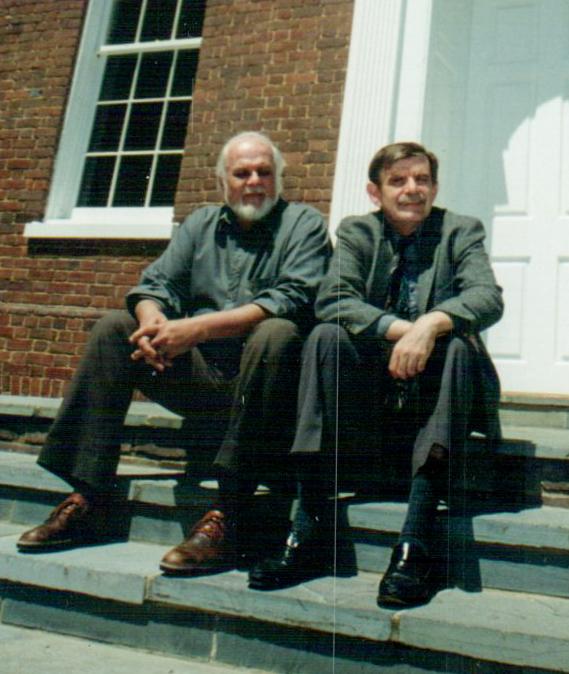A Good Life at the Georgetowner
By • October 13, 2014 0 1039

I was asked recently by two young videographers if and how the Georgetowner had changed since I began writing stories here.
I thought about that for more than a minute. Have things changed in 34 years? Hell yes, they’ve changed. Everything has changed, not just at the Georgetowner, but in newspapers and the media and Georgetown and Washington.
Our newspaper is being put together, designed, written and edited on iPhones, tablets and computers that have a combined weight that is considerably less than the linotype machine that publisher Dave Roffman used to set type for many years. The digital age swept away the IBM Selectric typewriter, and 35 mm film and old reading habits. Somewhere in an attic there are no doubt typewriter ribbons, old Remingtons and Polaroid cameras.
It’s true that I’ve spent 34 years writing stories for the Georgetowner. At first I worked in the many offices that bore the name, The Georgetowner. Now I write in a homemade office huddled over a screen, sending and reading e-mails. Thirty-four years is a lot of stories—more than 2,000 would not be an exaggeration. I’ve met a lot of people, accumulated cherished friends and acquaintances and spent a lot of time talking with people, in person and on the phone. Not to mention bathing in experiences and occasions, openings, plays, concerts, rallies and protests, swearing-ins, courtroom trials, government meetings, parades and, more and more often, funerals.
So, yes, things have changed in the profession and at the Georgetowner. The paper has moved through distinct publishing eras – the years of Amy Stewart, Dave Roffman and Sonya Bernhardt, the last still moving forward.
When I moved here in 1975, the Washington Post was basking in the afterglow of its Pulitzer Prize-winning Watergate coverage. Katharine Graham, Ben Bradlee and Bob Woodward and Carl Bernstein were the best-known names in journalism. Graham died in the summer of 2001 and Bradlee, who looked and acted every inch the part of dashing journalist, lies in a hospice. The Washington Post itself is owned byJeff Bezos, the head of Amazon, in a true 21st-century deal.
The Georgetowner isn’t just the Georgetowner anymore either—we have The Downtowner, two websites and a newsletter. It is a mostly happy marriage between digital and print.
As for myself, I have had the good fortune to be a witness to all kinds of history, thanks in no small part to a partner that encourages and abets that good fortune. Writing and reporting, journalism and newspapers are all about people, all kinds of people.
So, instead of name-dropping or title dropping, I’ll just drop a few things I’ll never forget: Lou Traxel, citizen extraordinaire; the sea of hats at Dorothy Height’s funeral at the National Cathedral; the bitter cold at Barack Obama’s first inauguration; the musicians gathered for a celebration of Woody Guthrie’s music; seeing Cary Grant walk the red carpet; sitting in on the trial of the accused killers of Officer Remington; David Levy and Devine putting on a searchlight opening of “Polyester” at the Key Theater.
Every anniversary, it seems we recite the names and the qualities: the late Tom Quinn’s red-faced gift for characters in the movies and on stage; Kitty Kelley’s love of Georgetown and down-to-earth kindness; the classiest arts guy around, George Stevens, Jr. And we remember those no longer with us: P Street resident Eva Calloway, almost 100 years old inviting me to dance; the exuberant optimism and intelligence of the Rev. Meg Graham at St John’s Church; and Virginia Allen’s stubborn way of success at the Senior Center.
I am often reminded when reminiscing of the woman in Samuel Beckett’s short play, “Rockabye.” The character, fading and ill, still remembers her life. At the end of each memory, she whispers, or shouts, or hollers and rasps one word: “More.” Here’s to “More.”

